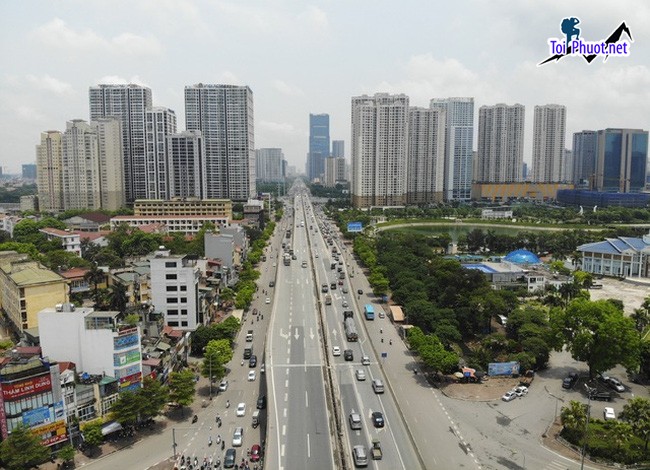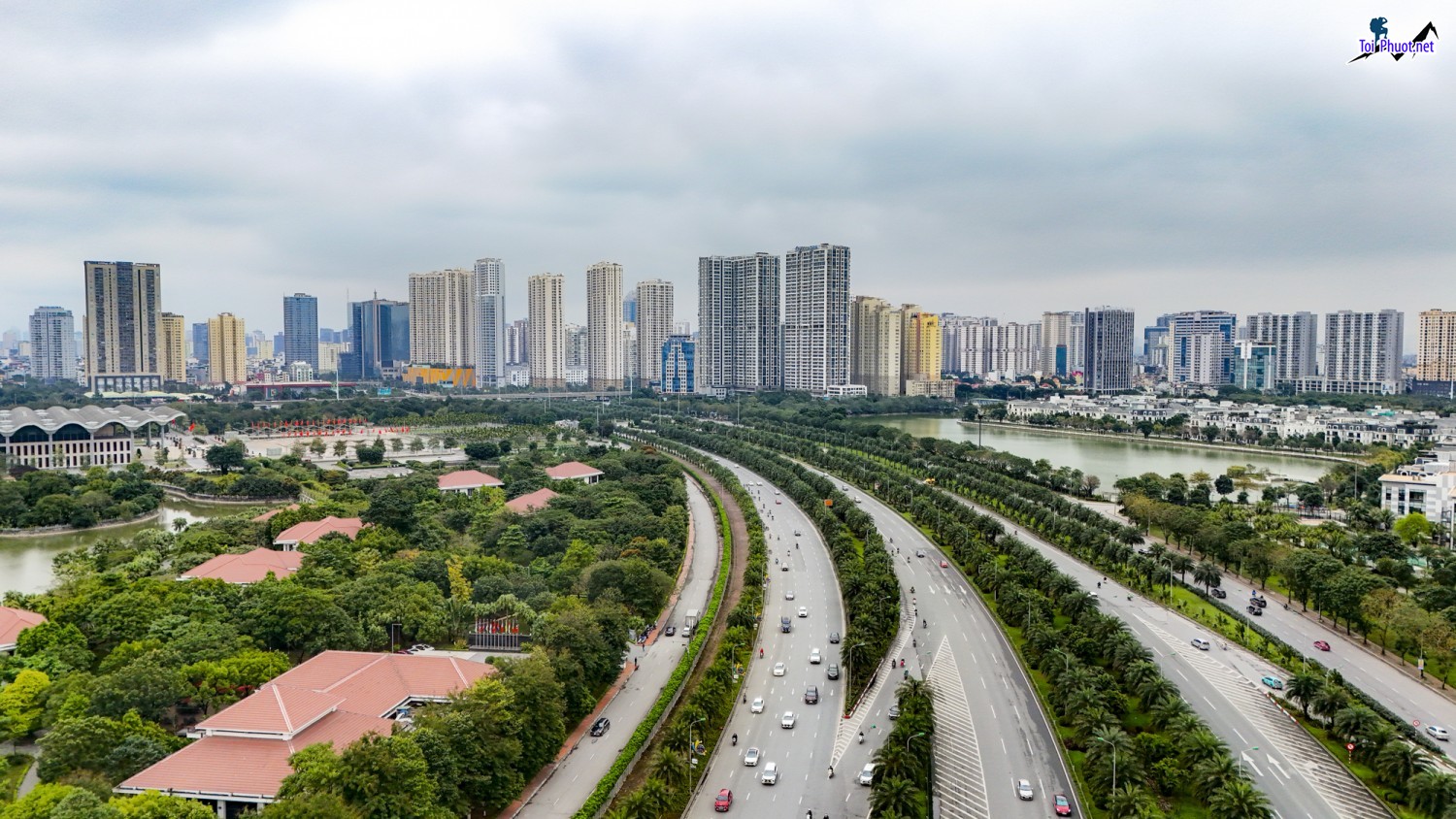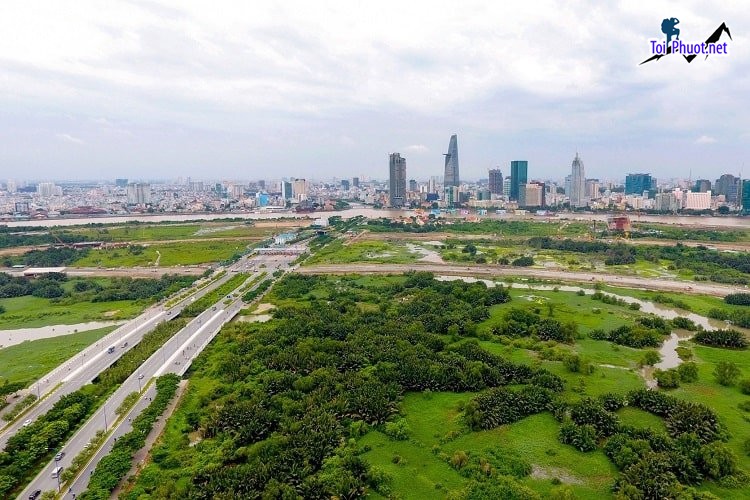
Both individual and institutional real estate investors are shifting their focus from central urban areas to suburban zones and nearby provinces—regions with more available land and increasing infrastructure investment.
Illustrative image.
According to Ms. Phạm Thị Miền, Deputy Head of Market Research and Investment Promotion at the Vietnam Association of Realtors (VARS), this trend reflects not only the ongoing search for viable real estate opportunities but is also influenced by key external factors such as urban planning policies, transportation infrastructure development, and evolving buyer demands.
Real Estate Investment Trends 2025: Huge Potential in the US
In reality, real estate prices in the central areas of major cities—especially Hanoi and Ho Chi Minh City—have soared to record highs, making it increasingly difficult for investors to enter the market due to rising capital costs and shrinking profit margins. This has pushed investors with limited financial capacity to seek more affordable and promising markets on the city outskirts.
“Particularly in the apartment segment, the average primary price in 2024 has reached 70 million VND/m², with most new projects priced from 60 million VND/m²,” Ms. Miền shared. “To afford a home in Hanoi, buyers need a minimum monthly income ranging from 45 to 210 million VND, depending on the district. In central areas such as Hoàn Kiếm, Ba Đình, and Tây Hồ, the gap between required income to pay mortgages and the average household income is massive—reaching up to 10 times the average—leaving many potential buyers unable to proceed. Even investors are retreating due to insufficient long-term capital.”
Meanwhile, the government and local authorities are pushing for the development of satellite cities to ease the pressure on urban centers. This expansion is turning suburban districts and neighboring provinces into attractive investment destinations for both individuals and companies.
The expansion of transportation infrastructure—including expressways, ring roads, and public transit—has shortened travel times between suburban and central areas, adding significant value to nearby real estate. Large-scale "all-in-one" township projects being developed in the suburbs are also accelerating infrastructure growth and commercial activity. As a result, surrounding property values are rising and catching the attention of investors.
“As investors move quickly to areas with lower land prices and high growth potential, they often focus on land lots, shophouses, or new urban developments that offer reasonable entry costs,” said Ms. Miền. “Instead of short-term speculation, many now pursue a strategy of land accumulation, anticipating future growth when infrastructure is complete. Additionally, investment models such as second homes, farmstays, and suburban resorts are gaining traction due to rental potential—especially post-COVID, as remote work and green living become more popular.”
According to VARS experts, this shift creates opportunities for real estate developers of all sizes. Several major property firms are already developing large-scale urban projects in adjacent provinces to capture this growing trend.
Similarly, for small and mid-sized developers, building projects in suburban or satellite areas is becoming a necessary path. With stricter regulations on land and property development, coupled with soaring land prices in city centers, many of these firms can no longer compete or develop projects in prime locations.
To stay competitive, many mid-tier developers are now actively acquiring clean land banks in suburban areas where land is still relatively affordable and offers high upside potential. This new supply is vital to meeting housing demand and boosting the growth of suburban real estate markets.
Ms. Miền added that beyond residential properties, many companies are ramping up investment in industrial real estate, fueled by supply chain shifts and government planning support. As suburban populations rise, demand for shopping centers, office complexes, and mixed-use developments also grows—offering additional opportunities for real estate firms to diversify their portfolios.
According to VARS, this trend of moving away from central areas will become even more pronounced. Investing in core urban zones is now largely suitable only for well-capitalized investors focused on long-term asset accumulation. In contrast, suburban areas—especially those with clear planning and infrastructure investment—still offer relatively “cheap” prices and large growth margins. As housing demand outside city centers continues to rise, supportive policies will further encourage development.
Real Estate Investment Trends 2025: Huge Potential in the US
However, investors targeting non-central areas should carefully research and evaluate their options. Legal risks may arise related to zoning, land use rights, and administrative procedures. Furthermore, not every area has sufficient appeal to ensure product absorption. Some still lack public amenities, making them less attractive to residents and investors alike.
Agreeing with this perspective, Mr. Lê Đình Chung, CEO of SGO Homes, advised that in the coming period, investors should study regional development plans thoroughly. In addition, it’s essential to assess local economic indicators and the liquidity of the target market before making investment decisions.
Real Estate Investment Trends 2025: Huge Potential in the US
“When an area develops well, the developer’s products benefit. Investors should only invest in markets with good liquidity. Location is key—don’t invest in areas that are too remote,” Mr. Chung emphasized.
At the “Real Estate 2025: Seeking Opportunities in Challenges” forum, Mr. Lê Văn Bình, Deputy Director of the Land Department at the Ministry of Natural Resources and Environment, suggested that middle- and low-income buyers should consider purchasing homes 15–20 km outside the city center. With favorable prices and future growth potential, now may be the right time to buy.
Nguồn tin: vneconomy. vn
Những tin mới hơn
Những tin cũ hơn
 Cho Thuê Lều Du Lịch Giá Rẻ Ở Tại Phú Yên
Cho Thuê Lều Du Lịch Giá Rẻ Ở Tại Phú Yên
![[Flycam] Núi Đá Bia, điểm du lịch sinh thái ở Phú Yên](/assets/news/2016_10/nui-da-bia-diem-du-lich-sinh-thai-o-phu-yen13.jpg) [Flycam] Núi Đá Bia, điểm du lịch sinh thái ở Phú Yên
[Flycam] Núi Đá Bia, điểm du lịch sinh thái ở Phú Yên
 Ngẩn Ngơ Vẻ Đẹp Tinh Khôi Của Hot Girl Tú Linh Khi Diện Áo Cưới
Ngẩn Ngơ Vẻ Đẹp Tinh Khôi Của Hot Girl Tú Linh Khi Diện Áo Cưới
 Cho thuê loa kẹo kéo vali du lịch giá rẻ tại Tuy Hòa - Phú Yên
Cho thuê loa kẹo kéo vali du lịch giá rẻ tại Tuy Hòa - Phú Yên
 Spa ở tại Tuy Hòa Phú Yên bạn nên chọn để làm đẹp và chăm sóc da
Spa ở tại Tuy Hòa Phú Yên bạn nên chọn để làm đẹp và chăm sóc da
 Địa Điểm Chụp Ảnh Cưới Đẹp Ở Phú Yên
Địa Điểm Chụp Ảnh Cưới Đẹp Ở Phú Yên
 Thuê Xe Máy Tuy Hòa - Thuê Xe Máy Phú Yên Giá Rẻ
Thuê Xe Máy Tuy Hòa - Thuê Xe Máy Phú Yên Giá Rẻ
 Cây hoa đào, mai, liễu đèn led, thanh lý giá rẻ toàn quốc
Cây hoa đào, mai, liễu đèn led, thanh lý giá rẻ toàn quốc
 Áo cưới Phú Yên Sang Trọng Quyến Rũ
Áo cưới Phú Yên Sang Trọng Quyến Rũ
 Suối nước khoáng Phú Sen, điểm du lịch nghĩ dưỡng ở Phú Yên
Suối nước khoáng Phú Sen, điểm du lịch nghĩ dưỡng ở Phú Yên
 Top 9 Shop giày nữ đẹp được yêu thích nhất Hà Nội đa dạng loại mẫu
Top 9 Shop giày nữ đẹp được yêu thích nhất Hà Nội đa dạng loại mẫu
 Top 13 Shop giày nữ đẹp được yêu thích nhất Đà Nẵng tại đây
Top 13 Shop giày nữ đẹp được yêu thích nhất Đà Nẵng tại đây
 Top 10 Nhà sách lớn nhất Sài Gòn Hồ Chí Minh với những kiến thức cực hay
Top 10 Nhà sách lớn nhất Sài Gòn Hồ Chí Minh với những kiến thức cực hay
 Top 8 Nhà sách lớn nhất Hải Phòng giá rẻ và nhiều ưu đãi
Top 8 Nhà sách lớn nhất Hải Phòng giá rẻ và nhiều ưu đãi
 Top 8 Nhà sách lớn nhất Hà Nội được đánh giá cao nhất
Top 8 Nhà sách lớn nhất Hà Nội được đánh giá cao nhất